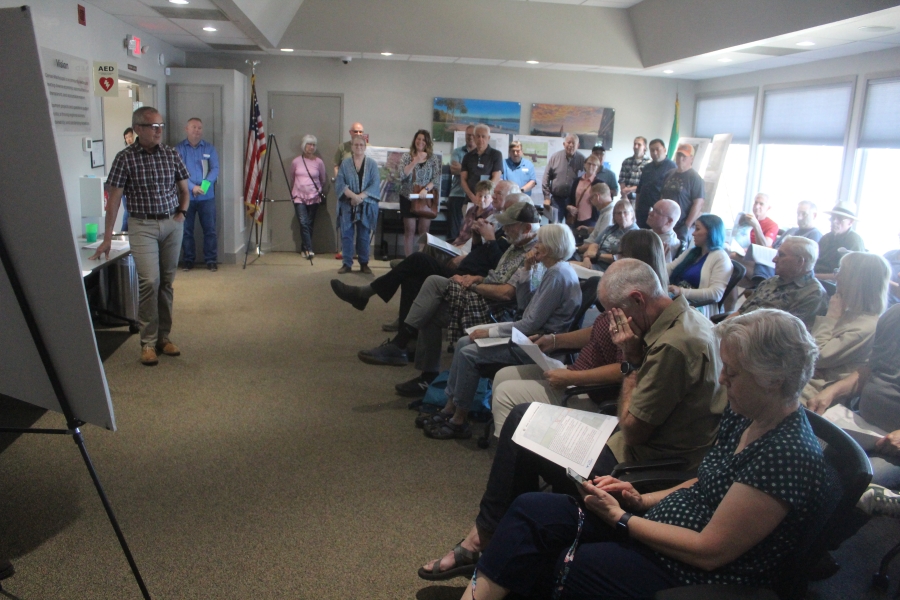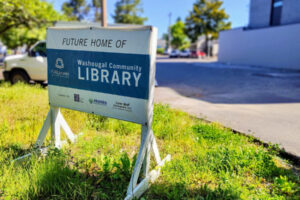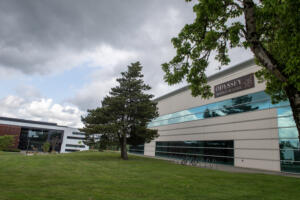The Port of Camas-Washougal delivered a message to Fern Prairie residents earlier this month about its plans to annex 12 of its properties at Grove Field into the city of Camas in order to attract revenue-generating businesses to the airport. The message wasn’t well-received by the community members, who repeatedly voiced their concerns about how future development could disrupt their lives in a variety of ways.
Nonetheless, Port leaders emerged from an open house, held June 5 at the Port’s administrative office, resolute in their determination to develop the property, preferably with the residents’ blessing.
“I hear what they’re saying,” Port Chief Executive Officer David Ripp said after the meeting. “They said, ‘It doesn’t matter if it’s 10 or 15 or 20 years from now, we don’t want to see anything.’ Well, we have to plan. You can’t just put your head in a hole and not do it. We’re trying to plan and move forward. We are a public agency, and we’re going to listen to our constituents and plan something that meets everyone’s needs. (We’ll) try. I mean, you’re going to get people that don’t want to see anything, and that’s not fair either, so we have to meet someone in the middle.”
Earlier this year, the Port submitted a site-specific request, part of an annual review process through which Clark County considers changes, additions, and updates to its comprehensive plan and zoning designations, to move 12 of its 13 Grove Field properties from the Rural-5 zone area into the Camas Urban Growth Area and zone the properties North Shore Mixed Development.
“The Washington Growth Management Act is requiring Clark County and the cities to update their comprehensive plans to accommodate population and employment growth into 2045,” according to a fact sheet provided to attendees. “Changes to the comprehensive plans and urban growth boundaries (UGB) will be considered between now and the end of 2025. If the Camas UGB does not change with the 2025 update, the next opportunity will not occur until 2035.”





